Dissecting peri-implantation development using cultured human embryos and embryo-like assembloids
- PMID: 37460804
- PMCID: PMC10474050
- DOI: 10.1038/s41422-023-00846-8
Dissecting peri-implantation development using cultured human embryos and embryo-like assembloids
Abstract
Studies of cultured embryos have provided insights into human peri-implantation development. However, detailed knowledge of peri-implantation lineage development as well as underlying mechanisms remains obscure. Using 3D-cultured human embryos, herein we report a complete cell atlas of the early post-implantation lineages and decipher cellular composition and gene signatures of the epiblast and hypoblast derivatives. In addition, we develop an embryo-like assembloid (E-assembloid) by assembling naive hESCs and extraembryonic cells. Using human embryos and E-assembloids, we reveal that WNT, BMP and Nodal signaling pathways synergistically, but functionally differently, orchestrate human peri-implantation lineage development. Specially, we dissect mechanisms underlying extraembryonic mesoderm and extraembryonic endoderm specifications. Finally, an improved E-assembloid is developed to recapitulate the epiblast and hypoblast development and tissue architectures in the pre-gastrulation human embryo. Our findings provide insights into human peri-implantation development, and the E-assembloid offers a useful model to disentangle cellular behaviors and signaling interactions that drive human embryogenesis.
© 2023. The Author(s).
Conflict of interest statement
The authors declare no competing interests.
Figures
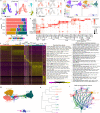
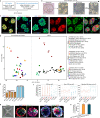
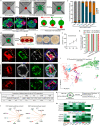

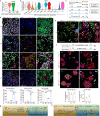
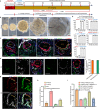

Comment in
-
Studying human embryo development with E-assembloids.Cell Res. 2023 Oct;33(10):737-738. doi: 10.1038/s41422-023-00863-7. Cell Res. 2023. PMID: 37563444 Free PMC article. No abstract available.
Similar articles
-
Complete human day 14 post-implantation embryo models from naive ES cells.Nature. 2023 Oct;622(7983):562-573. doi: 10.1038/s41586-023-06604-5. Epub 2023 Sep 6. Nature. 2023. PMID: 37673118 Free PMC article.
-
Investigating the dynamic signaling pathways involved in the specialization and differentiation of epiblast cells in early human embryos.Dev Biol. 2025 Oct;526:98-110. doi: 10.1016/j.ydbio.2025.05.014. Epub 2025 Jun 26. Dev Biol. 2025. PMID: 40581241
-
In vitro attachment and symmetry breaking of a human embryo model assembled from primed embryonic stem cells.Cell Stem Cell. 2022 Jun 2;29(6):962-972.e4. doi: 10.1016/j.stem.2022.05.001. Cell Stem Cell. 2022. PMID: 35659878
-
Human embryonic development: from peri-implantation to gastrulation.Trends Cell Biol. 2022 Jan;32(1):18-29. doi: 10.1016/j.tcb.2021.07.008. Epub 2021 Aug 17. Trends Cell Biol. 2022. PMID: 34417090 Review.
-
Modelling human embryogenesis: embryo-like structures spark ethical and policy debate.Hum Reprod Update. 2020 Nov 1;26(6):779-798. doi: 10.1093/humupd/dmaa027. Hum Reprod Update. 2020. PMID: 32712668 Review.
Cited by
-
Stem cells used to model a two-week-old human embryo.Nature. 2023 Oct;622(7983):469-470. doi: 10.1038/d41586-023-03150-y. Nature. 2023. PMID: 37848524 No abstract available.
-
Assembly of a stem cell-derived human postimplantation embryo model.Nat Protoc. 2025 Jan;20(1):67-91. doi: 10.1038/s41596-024-01042-7. Epub 2024 Sep 11. Nat Protoc. 2025. PMID: 39261744
-
β-catenin mediates endodermal commitment of human ES cells via distinct transactivation functions.Cell Biosci. 2024 Jul 24;14(1):96. doi: 10.1186/s13578-024-01279-5. Cell Biosci. 2024. PMID: 39049023 Free PMC article.
-
A new advanced stem cell-based embryonic model: The ultimate model?Mol Ther. 2023 Nov 1;31(11):3109-3110. doi: 10.1016/j.ymthe.2023.10.013. Epub 2023 Oct 21. Mol Ther. 2023. PMID: 37866361 Free PMC article. No abstract available.
-
The building blocks of embryo models: embryonic and extraembryonic stem cells.Cell Discov. 2025 Apr 22;11(1):40. doi: 10.1038/s41421-025-00780-6. Cell Discov. 2025. PMID: 40258839 Free PMC article. Review.
References
Publication types
MeSH terms
LinkOut - more resources
Full Text Sources
Research Materials

